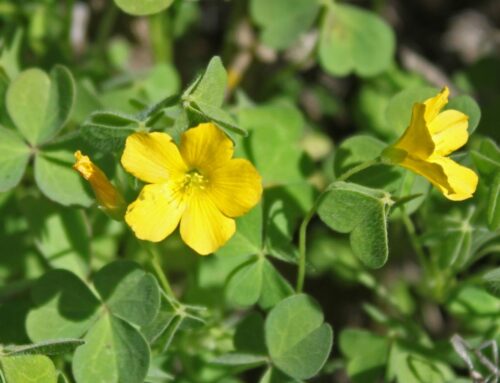Published in the March 13 – 26, 2019 issue of Morgan Hill Life

Container gardening is an excellent way to work around space limitations (or grumpy landlords). To container garden successfully, there are a few things to keep in mind: container selection, soil and nutrient needs, light requirements, and plant selection.
Plants can be grown in practically anything that isn’t toxic. You can hang a decorative net over a sunny window and plant climbing nasturtiums, peas, or beans in a nearby pot. Or, transform a bookcase into a vertical garden or put plants under a glass tabletop. All containers will need drainage holes. Also, if you will be moving plants indoors during winter, be sure they are not too heavy to lift, or use a plant stand with wheels.
Warning: if a container is going to be used to grow edible plants, be sure it is food safe. Many plastics and ceramic glazes can be toxic. Once you have selected your containers, it is time to add soil.
As with all plants, your container plants will need sunlight, water, and nutrients. Most garden plants need at least six to eight hours of sunlight each day. You may need to supplement with grow lights if your home, patio or balcony does not receive enough sunlight.

Over time, container plants will use up nutrients in the soil. You can supplement with aged compost, fertilizer, or by changing the potting soil every few years. This method can be very traumatic to root systems. Also, some plants will become root bound in containers. You can re-pot these plants into a larger container, or trim the roots.
Not all plants do well in containers. This is especially true for plants with taproots. Luckily, most edible plants have fibrous roots that do just fine in containers, including: berries, celery, dwarf fruit trees, herbs, horseradish, onions, scallions, shallots and leeks, sweet and hot peppers, pineapples, potatoes, and sweet potatoes are just a few. Note: tomatoes grown from seed will develop a taproot, while tomatoes grown from cuttings will not.
Be sure to stop by the Spring Garden Market from 9 a.m. to 2 p.m. April 13 at Martial Cottle Park for all of your spring planting needs.
Kate Russell is a UCCE Master Gardener. For more information, visit mgsantaclara.ucanr.edu or call (408) 282-3105 between 9:30 a.m. and 12:30 p.m., Monday through Friday.




